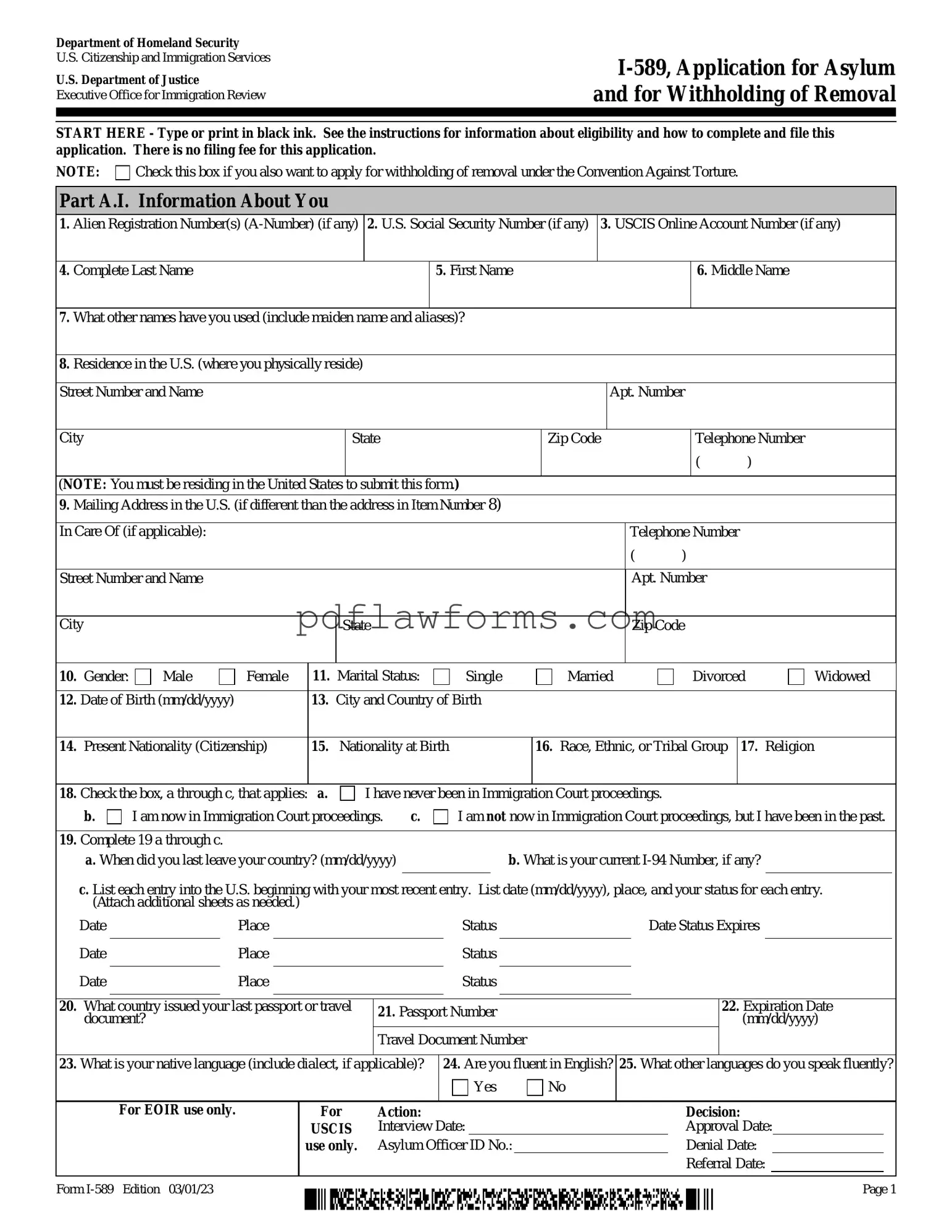Filling out the USCIS I-589 form can be a daunting task, and mistakes are common. One frequent error is not providing complete information. Every section of the form requires attention. Omitting details can lead to delays or even denials. It’s crucial to read each question carefully and provide thorough answers.
Another common mistake is failing to sign the form. A signature is not just a formality; it confirms that the information provided is accurate to the best of your knowledge. Without a signature, the application may be considered incomplete, resulting in unnecessary setbacks.
Many applicants also overlook the importance of dates. Providing incorrect or inconsistent dates can raise red flags. It’s essential to double-check all dates, including those related to travel, residency, and any significant life events. Consistency helps build credibility.
Some people neglect to include supporting documents. The I-589 form requires additional evidence to substantiate claims. Failing to attach necessary documents can weaken an application. Ensure that all relevant paperwork is included to strengthen your case.
Another mistake involves not following instructions regarding translations. If any documents are in a language other than English, they must be translated. Inaccurate or unverified translations can lead to misunderstandings. Always include certified translations with your submission.
Providing outdated information is also a common issue. Circumstances can change, and it’s important to ensure that the information is current at the time of submission. Regularly reviewing and updating your details can prevent complications.
Some applicants make the mistake of not keeping copies of their submitted forms. It’s advisable to retain a copy of everything sent to USCIS. This can be invaluable for future reference or if any questions arise regarding your application.
Lastly, many people underestimate the importance of deadlines. Submitting the form late can have serious consequences. Mark important dates on your calendar and ensure that you submit your application on time to avoid any issues.
